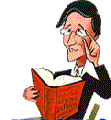
I’ve been enjoying Jesse Sheidlower’s daily updates promoting the new edition of his new book The F-Word, which he describes in appropriate OED deadpan as “in effect, the Oxford English Dictionary of fuck, listing hundreds of words, compounds, and phrases, each one supported by numerous real examples from sources throughout history showing how the word has been used.”
A page on his website devoted to this — inexplicably titled “The F Word,” without hyphen, which to me seems the dictionary editor’s equivalent of a nuclear scientist not carrying the 1 — is here, and his “FWOTD” Twitter feed is here.
I admire his rigor and specificity in definitions and etymologies for words like “fucktard” and “motherfather” (“One of many, many euphemisms for motherfucker, this one was popularized as a characteristic exclamation of comedian Redd Foxx on the TV series The Royal Family”). But the best stuff is actually in the comments, where various learned people make observations and engage in the minutiae of fuck. For instance, we learn that “in the 2009 movie ‘G-Force,’ the cute guinea pigs reference ‘Die Hard’: ‘Yippie-ki-yay, coffeemaker.’ ” [Actually, it was Die Hard 2. See comment.]
And there are priceless moments like this one in the comments to the fourth definition of “ratfuck,” from Sheidlower himself:
Oh, there’s no question that rats ‘rations’ has been around since the Vietnam War at least. The point is that ratfuck itself is attested (in various senses) since the 1920s.
So at best, we’d have [rat(ions) + fuck, modeled on earlier ratfuck] or something like that. Since fuck doesn’t have any sense that is really appropriate here, an independently created ratfuck ‘to pilfer’ would be somewhat inexplicable.
Motherfather!


2 comments:
The yippie ki yay line is used in all four Die Hard movies.
...inexplicably titled “The F Word,” without hyphen...
Actually the page is quite clearly titled "The F-Word," with hyphen. It's the graphic that lacks a hyphen.
The graphic on the site is taken from the cover design, which indeed lacks a hyphen. As soon as I saw this I complained to the designer, who said that it would look horrible with a hyphen, and artistic matters took precedence over getting the title right on the book's cover. I was forced to cave, as several other people agreed with him; "No one will notice, anyway," they claimed.
It gives me little pleasure to observe that they were wrong.
Post a Comment